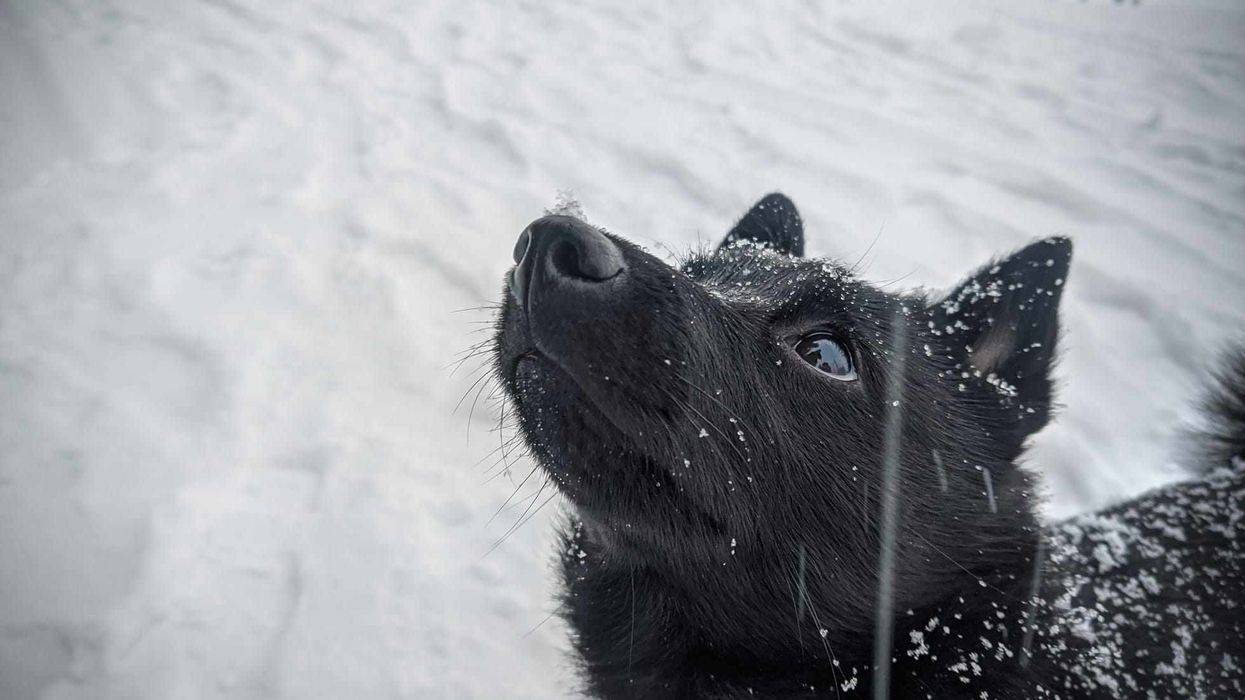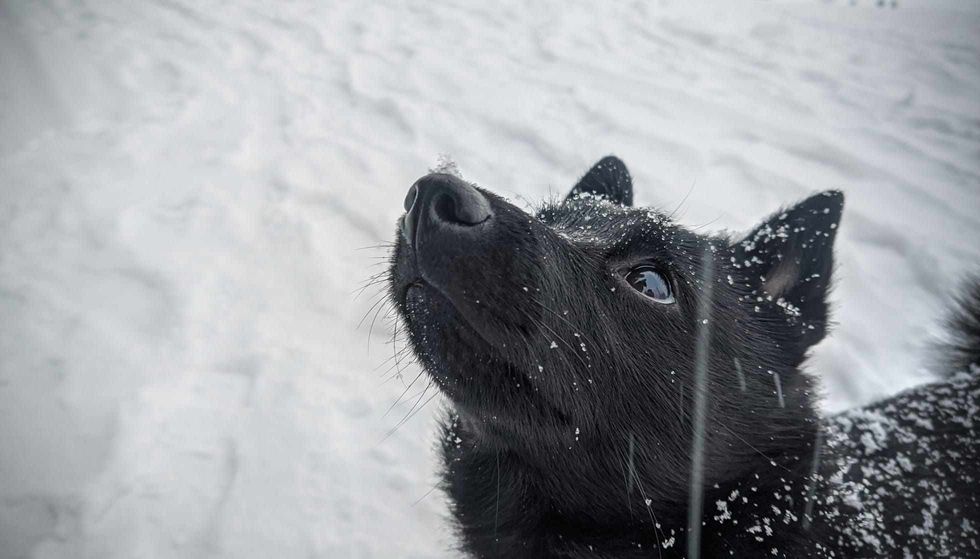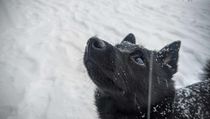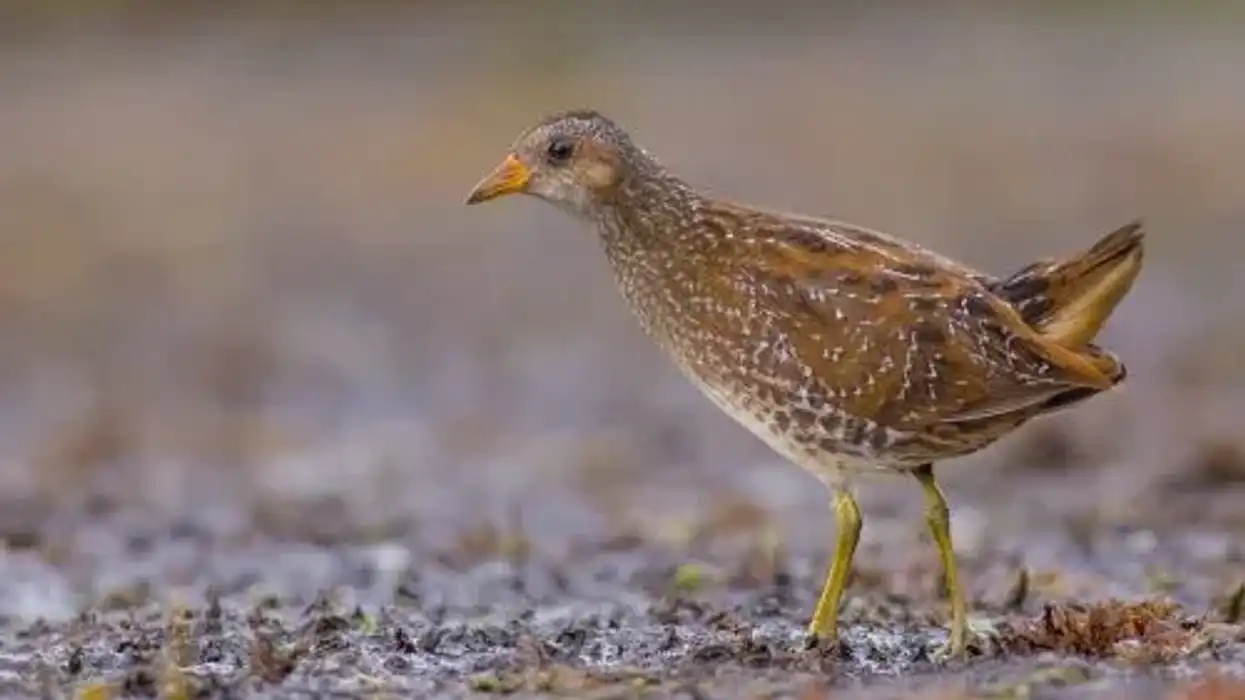Fun Schipperke Facts For Kids

Content
- What type of animal is a Schipperke?
- What class of animal does a Schipperke belong to?
- How many Schipperkes are there in the world?
- Where does a Schipperke live?
- What is a Schipperke's habitat?
- Who do Schipperkes live with?
- How long does a Schipperke live?
- How do they reproduce?
- What is their conservation status?
- What do Schipperkes look like?
- How cute are they?
- How do they communicate?
- How big is a Schipperke?
- How fast can a Schipperke run?
- How much does a Schipperke weigh?
- What are their male and female names of the species?
- What would you call a baby Schipperke?
- What do they eat?
- Are they slobbery?
- Would they make a good pet?
- Did you know...
- How to pronounce Schipperke?
- Do Schipperkes bark a lot?
Are you on the hunt looking for a new fur buddy? A Schipperke can easily become your best friend if you have the tiniest amount of experience with handling dogs.
This tiny dog breed is known for their humongous personalities and is a descendant of the Black Sheepdog breed, Leauvenaar. Because of their size, this breed has also been categorized as a Spitz or a mini Sheepdog.
Even though the breeds have a tiny body, they have a huge temperament that you will experience. The American Kennel Club (AKC) started recognizing the breed in 1904. The most common coat color for this dog is black, but other colors like apricot, cream, chocolate are also found.
These are low-demand and low-maintenance dogs. However, you will need to make them participate in regular exercise because of their high energy levels.
The grooming needs are minimal, and they will require a weekly brushing of their coat. One thing that comes with the huge personality of this breed is its tendency to bark.
Nevertheless, they are great family dogs and are quite affectionate to their masters or the whole human family. These dogs are currently listed as non-sporting according to the American Kennel Club (AKC), but they can still participate in a number of competitions.
With their high energy and their adaptability to apartment living, this dog breed has become a favorite of many.
Find them interesting? Keep reading to know more about them.
Also, do have a look at the other articles about the Pocket Pitbull and Chow Lab mix to know more about dog breeds.
Schipperke Interesting Facts
What type of animal is a Schipperke?
A Schipperke is a small breed of dog that hails from Belgium.
What class of animal does a Schipperke belong to?
As a dog, the Schipperke belongs to the class Mammalia and the order Carnivora.
How many Schipperkes are there in the world?
As a dog breed, the Schipperkes are widely found around the world, so there is no conclusive data about the exact number of them.
Where does a Schipperke live?
The Schipperkes live with their human family in their households. They were also used as watchdogs or farm dogs in the past.
What is a Schipperke's habitat?
Schipperke dogs are highly adaptive with their life in human households. However, these dogs have a low tolerance for weather conditions that are either too hot or too cold. Their medium coat isn't meant for guarding them against harsh winters. Another thing about them is that Schipperkes should seldom be left alone for a long while.
Who do Schipperkes live with?
Schipperkes have been bred to live with human beings. As small dogs, they do tend to have a nature that may gear towards being aggressive without proper training.
It has also given rise to their name, the 'little black devil.' Making a Schipperke puppy go through proper socialization and training is very important. They aren't that dog friendly, so people who have already own a dog may want to avoid them.
They can also be a little mouthy with strangers, which may turn into excessive barking. However, the Schipperkes are wonderful for kids, and their size makes them perfect companion dogs.
How long does a Schipperke live?
The average life span for a Schipperke dog is around 13-15 years.
How do they reproduce?
Just like other dogs, female Schipperkes have estrus (heat) cycles when they can get pregnant. Around two to seven Schipperke puppies are born in each litter.
The gestation period of dogs usually lasts 58-68 days. As Schipperkes are small dogs, proper care should be taken during their pregnancy. One of the most interesting things is the Schipperke mix dog breeds that are currently available with breeders.
It is a way to diversify the gene pool of the breed, and the process also gives rise to interesting new dog breeds. A common Schipperke mix seen includes the Schipper-Chi, the Schip-A-Pom, the Border Schipper, and the Skip-Shzu.
What is their conservation status?
The Schipperke is yet to make it into any of the conservation status lists.
Schipperke Fun Facts
What do Schipperkes look like?
Schipperkes are a little dog breed that has been present with humans since the 16th century. They have a fox-like head and pointed ears, which give them their distinct look.
As they are small dogs, they were previously classed as spitz, but they have been recognized to be distinct. One of the striking things about the dog breed is its smooth and shiny coat.
The Schipperke's coat is usually black in color, but other color variants like cream, apricot, chocolate, black-tan mix are also found. However, they have gained popularity mainly as the small black dog breed with a shiny medium coat.
The legs of this breed tend to be small, which goes with their tiny body. They also have a wide chest, and the back has a sloping shape till their rear.
Most Schipperkes will be born without a tail, but some may have a tail. But, docking might be done by breeders in their puppy stage to make them look more attractive to probable dog parents.
The Schipperkes sports a shiny and smooth double coat. They have a shorter coat on the face and have a fuller and denser coat on their body.
These dogs have vibrant brown eyes and a small black nose. The American Kennel Club (AKC) recognizes the Schipperkes that have had their dew claws removed.
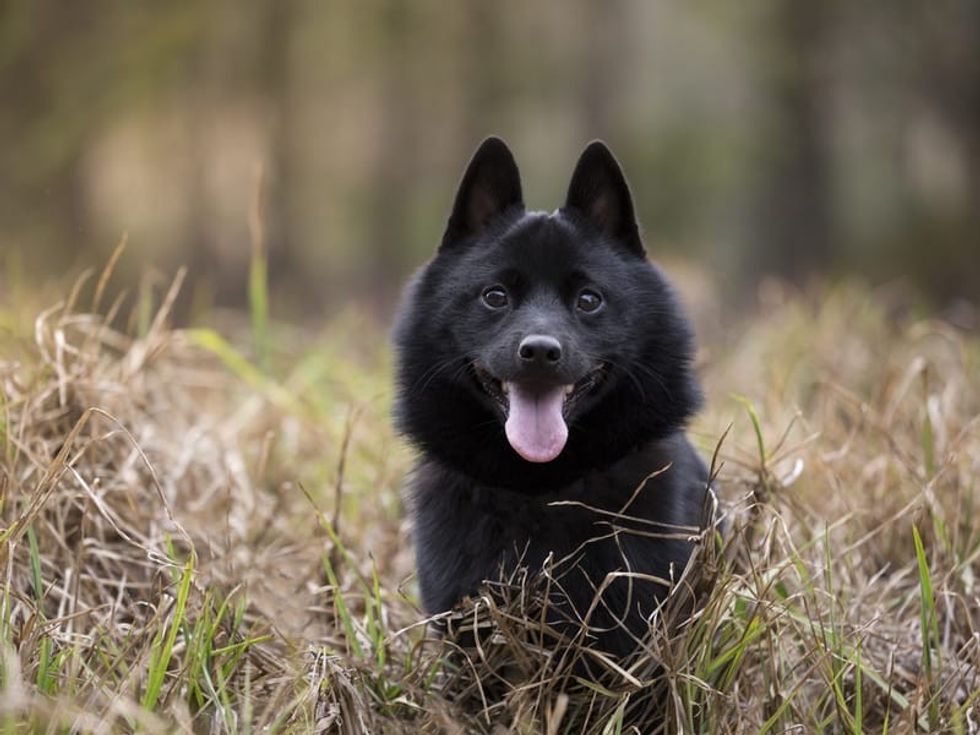
How cute are they?
Like all other dogs, Schipperkes are also quite cute. They especially look great because of their small height and fine black coat. However, this small dog breed also has a barking problem and may often get irritated by strangers. So, it is better to refrain from touching Schipperkes if you see them with someone that you don't know.
How do they communicate?
Well, let's just say that Schipperkes are keen on barking. They can be territorial and temperamental, so barking is in their nature.
The breed is not suitable for those who do not want to hear their dog barking at odd hours. They may even participate in excessive chewing. Like other dogs, the Schipperke also uses their urine to mark territories or to attract mates.
How big is a Schipperke?
The average shoulder height of a Schipperke is 12-13 in (30-33 cm). So, they are about two to three times smaller than the Great Dane dog breed that can reach a height of 28-33 in (71-86 cm).
How fast can a Schipperke run?
Though a lot isn't known about the top speed of a Schipperke, their average speed might be 20 mph or 32 kph like other dogs. The Schipperke usually has a high energy level and they need regular exercise.
However, they are recognized as a non-sporting dog breed by the American Kennel Club (AKC). However, the American Kennel Club (AKC) does allow the Schipperke dogs to participate in different competitions like rallies, tracking, obedience, and conformation.
How much does a Schipperke weigh?
The average weight of a Schipperke little dog is around 11=18 lb (5=8 kg). The weight of the females of the breed tends to be less than the weight of the male Schipperke dog.
What are their male and female names of the species?
Like other dogs, the male Schipperke dog is known as a dog and the female Schipperke dog is known as a bitch.
What would you call a baby Schipperke?
A baby Schipperke is called a puppy.
What do they eat?
As a small dog breed, the Schipperke will require less food than the bigger dogs. However, you need to make sure that they are getting healthy and adequate food.
Even though they are small, the Schipperke dogs have a tendency to put on weight. So, it is important for the breed to have a balanced diet of high-quality food.
When you get a Schipperke puppy, the first thing you should do is visit a vet. They will be able to suggest a balanced diet chart that will work well for the dog.
According to the American Kennel Club (AKC), a Schipperke should be given the right food according to their activity level. An adult Schipperke usually needs about 1 1/8 cups to 1 7/8 cups of excellent dog food in a day.
Also, do note that the food requirements of your pet dogs will change according to their age. Schipperkes do have prey drive for rodents, but they will seldom eat the animals that they catch.
Are they slobbery?
No, Schipperkes do not usually have a tendency to drool unless they see tasty food in front of them.
Would they make a good pet?
Yes, Schipperke dogs make excellent pets when proper care is taken of them. The small breed of dog is known for its active and agile personality. They are independent dogs who tend to love and protect their families.
They have been used as reputed watchdogs for a long time, and now most of them cohabit with humans as loving pets. The breed is extremely affectionate towards their human parents as well as towards children. The breed is extremely intelligent, and they understand cues quite well.
Though these dogs aren't made for novice owners, it is quite easy to care for them as your pet. They do not have much shedding throughout the year, and they tend to have weekly grooming needs.
Except for the shedding seasons, there is little to no problem with grooming the small dogs. Their double coat maintains its shine if you give them good food. They do not need frequent baths but do make sure to keep a Schipperke's coat free from lice and teaks through weekly brushing.
The Schipperke breed is great for those who want their pet to tag along with them for adventures. The dog has a high energy level along with amazing playfulness.
The breed needs at least 45 minutes to one hour of active exercise every day. They will appreciate owners who can take them on adventurous walking trips or hikes. However, the AKC lists them as a 'non-sporting' dog breed, so they cannot participate in heavy dog sport competitions.
The American Kennel Club (AKC) also notes that the dog breed is good at adapting to an apartment lifestyle. However, you need to make sure to provide the Black sheepdog descendent with enough space so that they can move around freely. Even though these dogs aren't highly sensitive, they shouldn't be left alone.
One problem that pet parents may face with the Schipperke breed is their usual fussing about training. They are one of those dog breeds that are adamant about making a ruckus during their training.
So, if you have no idea about training these dogs, it is always better to hire someone who has had experience with the breed.
The American Kennel Club (AKC) suggests starting their training from puppyhood. Also, make sure to give them adequate active exercise as build-up stress or frustration in dogs may give rise to unwanted aggression or a bad temperament.
Did you know...
The Schipperke is also known as the 'Tasmanian black devil' because of their mischievous and curious nature.
In the USA, the Schipperke Club was first founded in 1885.
AKC ranks Schipperkes as the 82nd most famous dogs in their list of 155 dog breeds.
Caring about your pet's health is quite crucial. Without proper health, a dog won't be able to maintain its personality or its usual lifestyle. Schipperkes are known for being in good health, and they have little tendency to fall ill.
However, there are some common problems that this breed may face. Weight gain and their tendency to become obese have come up as a major issue.
Obesity also brings in other problems like joint issues, diabetes, and cardiovascular issues. Pet parents do need to restrain from giving them too much food, which may result in weight gain. Also, maintaining an active lifestyle and giving your Schipperke ample amount of space will translate into better health.
Another problem faced by Schipperke is the Legg-Calve-Perthes disease. It mainly affects the hip joint and may lead to degradation of the hip ball. Doctors believe that this problem mainly arises from past injuries.
So, if your Schipperke gets any type of injury, make sure to consult with a vet. Patellar Luxation is another problem that these dogs may face, and it is often present from their birth.
It is commonly seen in small dogs such as the Schipperke. Improper handling may give rise to future problems like arthritis. Other common ailments include Autoimmune Thyroiditis and Epilepsy.
A strange mutation has been studied in Schipperkes, know as the Mucopolysaccharidosis Type IIIB (MPSIIIB). It takes two to four years from the dog's birth before they start showing signs.
The mutated genes lack the N-acetyl-a-D-glucoseaminidase (NAGLU) enzyme. The most common symptoms include the dog's ill ability to balance, problems in walking, and in facing obstacles. Proper DNA tests of the puppies may help in the early detection of this problem.
How to pronounce Schipperke?
The syllabic pronunciation of the name Schipperke is 'skip-er-kee'.
Do Schipperkes bark a lot?
Yes, Schipperkes are known for their tendency to bark a lot, especially when met with strangers. So, a pet parent may want to train the breed to reduce barking in them. If you want to reduce the barking tendency of a dog, you will need to train them from their puppyhood.
Every dog has its own personality, so a pet parent will need to understand their individual dog in the best possible way. They can even contact a Schipperke club to get insights into ways in which others have curbed the barking tendency in their dog.
Rather than taking the route of bad behavior or a grumpy attitude, the best way to train your dog is through love and affection.
Make sure to discourage their barking tendency, but you should also appreciate your dog by giving them treats when they behave well with strangers or even when they are a little irritated. Keeping Schipperkes in an active lifestyle with enough exercise helps in reducing their tendency to bark.
Another thing to keep in mind is the origin of your pet. Breeders are often not the best place to get your dogs as they can often keep these tiny beings under a lot of pressure.
Dogs born from unhealthy or stressed parents often carry the tendency to be more spiteful and angry.
Even though training does help in curbing the tendency to bark, it is Schipperke's nature to be vocal. Please refrain from using electric collars or other such contraptions as it will stress them out, and it can break the sweet bond shared between the both of you.
Here at Kidadl, we have carefully created lots of interesting family-friendly animal facts for everyone to discover! Learn more about some other mammals including Pitbull Chihuahua mix, or Cheagle.
You can even occupy yourself at home by drawing one on our Schipperke coloring pages.
We Want Your Photos!
More for You
See All
Bachelor of Arts specializing in Journalism and Mass Communication, Postgraduate Diploma in Sports Management

Moumita DuttaBachelor of Arts specializing in Journalism and Mass Communication, Postgraduate Diploma in Sports Management
A content writer and editor with a passion for sports, Moumita has honed her skills in producing compelling match reports and stories about sporting heroes. She holds a degree in Journalism and Mass Communication from the Indian Institute of Social Welfare and Business Management, Calcutta University, alongside a postgraduate diploma in Sports Management.
Bachelor of Business Management

Yashvee PatelBachelor of Business Management
Yashvee has won awards for both her writing and badminton skills. She holds a business administration honors degree and has previously interned with social media clients and worked on content for an international student festival. Yashvee has excelled in academic competitions, ranking in the top 100 in the Unified International English Olympiad and placing second in an essay-writing competition. Additionally, she has won the inter-school singles badminton title for two consecutive years.
Disclaimer
1) Kidadl is independent and to make our service free to you the reader we are supported by advertising. We hope you love our recommendations for products and services! What we suggest is selected independently by the Kidadl team. If you purchase using the Buy Now button we may earn a small commission. This does not influence our choices. Prices are correct and items are available at the time the article was published but we cannot guarantee that on the time of reading. Please note that Kidadl is a participant in the Amazon Services LLC Associates Program, an affiliate advertising program designed to provide a means for sites to earn advertising fees by advertising and linking to Amazon. We also link to other websites, but are not responsible for their content.
2) At Kidadl, we strive to recommend the very best activities and events. We will always aim to give you accurate information at the date of publication - however, information does change, so it’s important you do your own research, double-check and make the decision that is right for your family. We recognise that not all activities and ideas are appropriate for all children and families or in all circumstances. Our recommended activities are based on age but these are a guide. We recommend that these ideas are used as inspiration, that ideas are undertaken with appropriate adult supervision, and that each adult uses their own discretion and knowledge of their children to consider the safety and suitability. Kidadl cannot accept liability for the execution of these ideas, and parental supervision is advised at all times, as safety is paramount. Anyone using the information provided by Kidadl does so at their own risk and we can not accept liability if things go wrong.
3) Because we are an educational resource, we have quotes and facts about a range of historical and modern figures. We do not endorse the actions of or rhetoric of all the people included in these collections, but we think they are important for growing minds to learn about under the guidance of parents or guardians.
